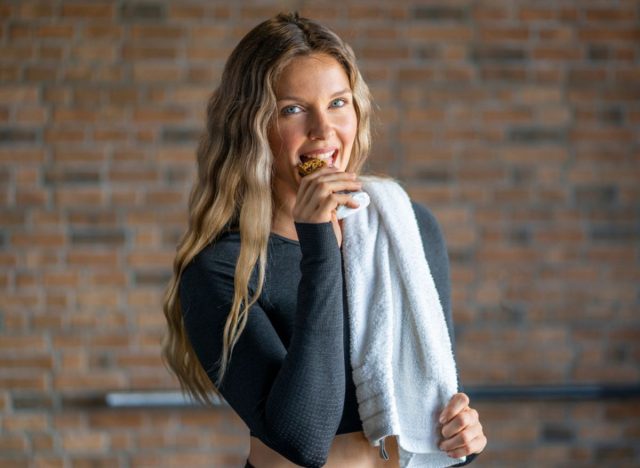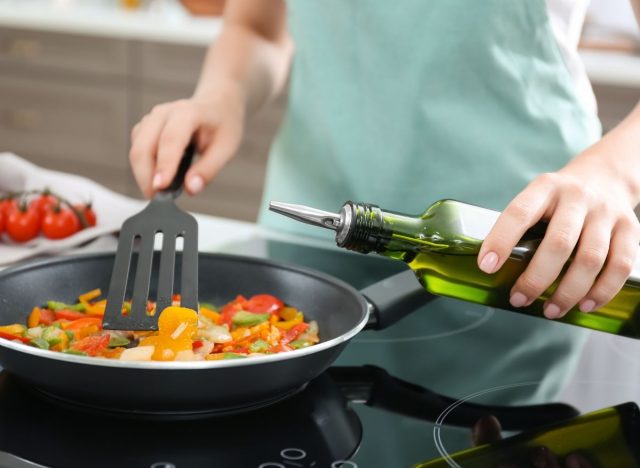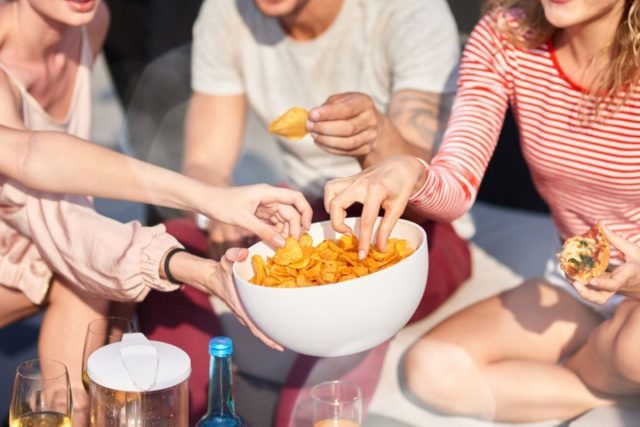Trying to lose weight in a healthy, long-term, sustainable way can be a frustrating process sometimes because every individual has their own unique needs. Meaning, that despite our wishes, there is no single “miracle” solution for reaching our goals. Instead, it often requires us to get to know ourselves and what our bodies need, while making small but impactful changes to our daily routine, to successfully lose weight.
And sometimes, even when we’ve made these changes, we can still hit some road blocks in achieving our goals. There are many possible reasons why someone may not see the results they desire, and plateauing is a normal, healthy part of the process. But there are instances where you may not be getting your desired results because of some sneaky eating habits you haven’t noticed.
To learn more, we talked with some dietitians about common eating patterns that may be preventing you from losing weight. Then, for more healthy weight loss tips, check out 6 Best High-Protein Foods for Weight Loss.
It’s crucial to eat foods that you not only love to eat but that are also nutrient-dense; however, some of our dietitians recommend measuring out your portions in order to not go overboard on calories.
“While foods like nuts, nut butters, hummus, and avocado are all nutrient-rich, amazing foods for you, they all contain healthy fat and contain more calories than other carbohydrates or protein,” says Amy Goodson, MS, RD, CSSD, LD author of The Sports Nutrition Playbook and member of our Expert Medical Board. “Many people looking to lose weight think, ‘these foods are good for me so it does not matter how much of them I eat,’ but this isn’t true. Portion size is key when trying to lose weight, so counting your nuts and measuring your peanut butter and hummus is key to success.”

Eating enough protein throughout your day is necessary for your overall health, especially if you want to lose weight or manage your current weight loss.
“Protein is essential for weight loss because it helps shed fat and build lean muscle, but unfortunately, many people are eating meals that lack enough protein,” says Courtney D’Angelo, MS, RD, author at Go Wellness.
This mistake of not eating enough protein often comes from people either believing it will make them too “bulky,” which isn’t true, or they just aren’t sure how to get enough protein at every meal.
“My recommendations for buying protein sources are chicken breasts, turkey burgers, chicken sausages, fish, or a pork tenderloin,” says D’Angelo. “Most likely, after eating your protein source, you’ll be less prone to eating unhealthy snacks or side dishes that are filled with high calories, sugar, processed grains and so on.”

The type of oil how much of it you use can have a sneaky impact on your weight loss goals.
“Oil is one of those ingredients that makes a food’s calorie density increase significantly and quickly,” says Trista Best, MPH, RD, LD a registered dietitian at Balance One Supplements.
You can reduce your oil intake—and subsequent calorie intake—by measuring out how much you want to use, which can make a difference if this is something you’re doing consistently, or even purchasing an oil spray can to use instead of pouring oil from a bottle.
Cooking without any oil is also an option. “For instance, when sautéing vegetables, it is not uncommon to reach for extra virgin olive oil or butter to begin the process. However, water sautéing is just as effective without making an otherwise nutrient dense dish calorie dense,” says Best.

“While everyone needs a piece of cake or some chips and queso from time to time, many people go overboard on their splurges and end up eating enough calories to make up for the deficit of calories they created in the week. When this happens, an individual may not gain weight, but they likely won’t lose it either,” says Goodson.
Goodson emphasizes that the goal here is not to stop splurging, but to possibly check in with yourself and see if you there are times you may be able to pull back a bit.
“The key to splurging is eating some of what you want, but not everything you’ve ever wanted,” she says. “Think of it as the 80/20 Rule: 80% of the time focus on sticking to the plan and consuming whole grains, lean protein, dairy, healthy fat, fruit, and plenty of vegetables, and 20% of the time allow for splurging on higher-calorie foods that maybe should not fit into your daily eating plan.”

“Sometimes, we add our favorite condiments to our foods to enhance the flavor, but regularly adding certain condiments can be a critical mistake preventing you from losing weight,” says D’Angelo.
“For example, adding syrup to your pancakes in the morning might taste good in the moment, but that extra sugar is going to set the tone for the rest of your day causing your body to crave more sugar. Other examples include adding barbecue sauce or ketchup to a lunch or dinner meal, pouring some ‘low-fat’ dressing in your salad, adding mayonnaise to a sandwich, or teriyaki sauce to chicken,” says D’Angelo.
This doesn’t mean you can’t use condiments anymore, because that would be no fun at all! But finding some healthier alternatives to your regular go-to picks, or just simply using a bit less every time can make a significant difference in your weight loss goals.


